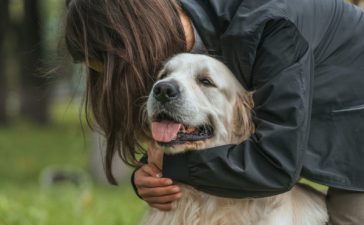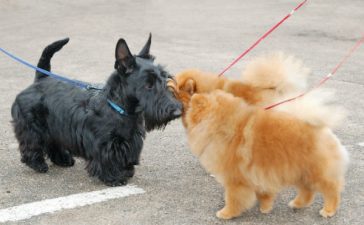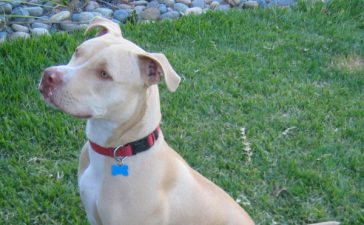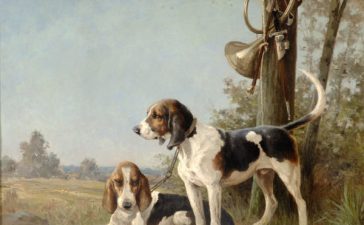To say that dogs have been around for a while would be an understatement; the first dogs started living with humans as early as almost 40,000 years ago. Since then, dogs have been bred and divided into a myriad of different breeds, for different purposes, throughout history, all around the world. It can be hard to see that some are even related, at all. Some breeds, however, have stuck with us for quite some time, mostly unchanged in appearance and purpose. These are most likely the oldest breeds in the world.
What defines the oldest breeds?
First off, let’s clear up some terminology. The term “ancient breeds” is often used when it comes to breeds with a long history, but it’s generally pretty loosely applied. When we talk about prehistoric breeds ― which is what “ancient” usually refers to in the context of a breed’s history ― “primitive” might be more accurate. A primitive breed is one that has remained mostly unchanged since it first appeared, usually due to its country or region of origin being cut off from others. This has let these breeds exist without much interference or interbreeding with other dogs. These breeds are also sometimes referred to as “landrace dogs”; they’ve developed without much human interference, at all.
So what does “ancient” mean? Well, scientifically, ancient breeds are the breeds whose DNA differs the least from that of undomesticated canines, i.e. wolves. Most of the dog breeds we have today first emerged in the 18th and 19th centuries, often as crosses between several other breeds before them. In other words, they were created and designed by humans, rather than the result of natural selection. When it comes to the oldest breeds, however, we’re talking a lot longer than just a couple hundred years. Due to the definitions being a little foggy, articles listing the oldest breeds in the world tend to vary a bit. There are nine, however, that scientists everywhere can agree are part of the oldest breeds club.

Strong, smart, and independent
The oldest breeds tend to have a few things in common, aside from their long history. For starters, they’re strong. They have well-developed muscles, often a little more compact, definitely resilient, and their coats tend to lean toward the more earthy end of the color spectrum. Second, they’re intelligent. Though, maybe not in the way we usually refer to dog intelligence ― they can make decisions and learn quickly, but not necessarily according to their human’s rules and wants. These dogs are more independent, and they like to make their own choices, most of the time. Lastly, these breeds are usually particularly adept at behaviors like hunting and guarding ― perhaps not so surprising, given that this was the original purpose of dogs in general.
Do they make good pets, though? Definitely. The only thing to keep in mind is that they may require more socialization and training, since their needs can be a little different from those of other breeds. If you don’t consider these factors, you may end up with a dog with some behavioral issues.
Hunters, guardians, and Egyptian favorites
No one knows exactly how long these breeds have been around, but it can be estimated through tracking genomes and observing culture and art from various time periods. When were they first mentioned or depicted, for example?
Using the genome-analysis method, the Basenji is consistently at the top of the list. Most likely, the Basenji first originated in Central Africa, where it was used for hunting and tracking, as long ago as 6,000 B.C.. They have even been depicted in ancient Egyptian tombs. Another Egyptian ancient breed is the Saluki, also dating back thousands of years. Prized for their agility and speed, the Saluki has long been used in Arab countries as big-game hunters. Archaeologists have even found mummified Salukis in ancient Egyptian tombs. The Afghan Hound has a similar build and flowing locks, hails from Afghanistan, and is also consistently listed as one of the world’s oldest breeds.
Heading a little further East, a lot of our oldest breeds actually come from Asia. The Akita Inu (as well as the increasingly popular Shiba Inu) has been around for thousands of years, used for hunting as well as guarding homes. In 1931, the Akita ― not to be confused with the American Akita ― was officially declared a Japanese national monument. The Chinese Shar-Pei, perhaps best-known for its wrinkly appearance, was a hunter and a guard dog at least as far back as 200 B.C. The Chow Chow, often confused with the Shar-Pei due to its size, shape, and matching blue tongue, has also been around for just as long. It likely hails from Mongolia, Siberia, or Northern China, but the exact origin isn’t known. The Chow was often kept in monasteries and as guardians, and some accounts say that they accompanied the Mongolian army in the 13th century.


Born from the cold north
Some of our oldest breeds are perfectly designed to withstand, and even thrive, in the coldest parts of the world. One of the most well-known and well-loved is the Siberian Husky, developed by the indigenous Chukchi tribe in Siberia. Not only were these dogs kept as pets or reliable working dogs, but they herded reindeer, pulled sleds, working in the cold for hours without issue. It wasn’t until the early 1900s that Americans in Alaska started importing these dogs for sledding competitions. Speaking of Alaska, the Alaskan Malamute is also on our list of the world’s oldest breeds. The Alaskan Malamute is bred for strength, rather than speed, unlike the Siberian Husky ― they’re better at long-distance hauls, than sled-racing. Originally, they were also bred to hunt seals and polar bears. In 2010, they were named the State Dog of Alaska.
The Samoyed, back in Asia, is named after the indigenous Samoyed tribe in Siberia, which kept this dog as a worker, guardian, and loyal friend over many centuries. The famous fluffy, thick, brilliant white coat of the Samoyed is just as well-known and loved as their warm temperament and friendly disposition.
Honorable mentions
While these nine are pretty unanimously considered the oldest breeds in the world (that haven’t gone extinct, that is), there are others who are often put in the same category. Usually, a list like this consists of 13-14 breeds. And most of them are definitely quite old, having been around for at least 1,500-2,000 years or so, compared to the 5,000 years or more of the others. Among them are northern working dogs like the Finnish Spitz, the Eurasier, and the Greenland Dog. There are also smaller breeds like the Maltese, the Japanese Chin, the Tibetan Spaniel, the Pekingese, the Shih Tzu, and the Lhasa Apso.
If you find yourself fascinated by these dogs, the world’s oldest breeds, then you’re not alone. There’s a reason they’ve been around for so long, after all. And if you feel like bringing one into your life, whether it’s a Husky or an Afghan or a breed not even mentioned here, just remember that it’s a commitment. They’re often strong-willed, physically active, intelligent, and require a little more effort than your average dog. But if you can give them what they need, it will be totally worth it.




































































































